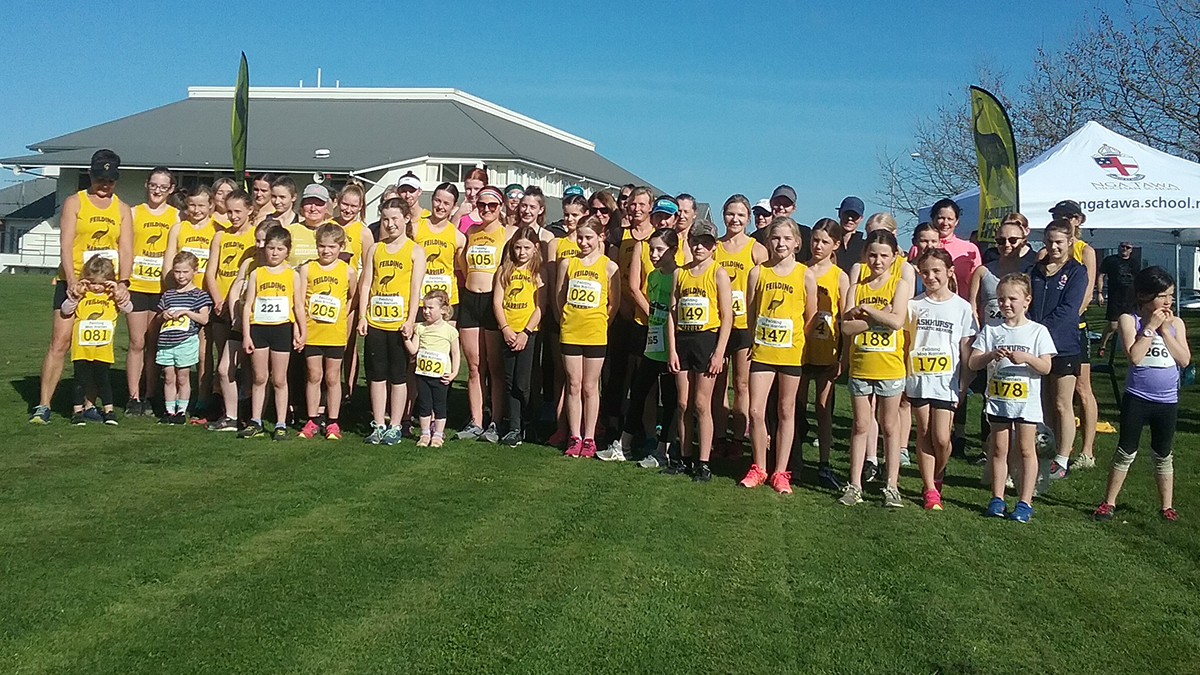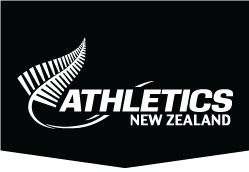News & Updates
Distance running community reveals innovative approach

The 50 years of women’s running at Feilding Moa was celebrated with a run at Nga Tawa Diocesan School in August
Following the first Connections Conference webinar, which was focused on “providing great experiences for the distance running community” we put the spotlight on a trio of New Zealand clubs and the work they are doing to boost membership.
Feilding Moa Harriers
A collaborative philosophy has aided the health and well-being of Feilding Moa Harriers – one of New Zealand’s most vibrant running clubs.
Based out of Athletics Manawatu Whanganui the club has long viewed the importance of a close connection with other clubs and local schools as a means for attracting future club members.
While Feilding Moa’s club committee member and club coach Rob Dabb says the development has been more “organic” in nature – it has reaped rewards and he would encourage other clubs to take similar steps.
“When club member Claire Horner arrived as sports director at Nga Tawa Diocesan School in Marton a couple of years ago she was keen to grow the school’s cross country programme,” explains Rob.
“She reached out to Feilding Moa and through this connection we have had six to eight teenage girls participating in distance running and other club events. The school had 30 girls participate at the Whanganui School Champs and although this is a real credit to Claire, it shows the importance of developing a collaborative relationship.”
“Nga Tawa how has a dedicated 4km limestone training trail around the perimeter of the school farm which we used for a well-attended club run this season – and at the same time fittingly celebrated 50 years of female membership at Feilding Moa.”
The club also has a good relationship with Feilding High School, where a Harrier division has been established over the past couple of years. High School harriers hosted a handicap cross country of the school’s sheep & beef farm on the edge of Feilding in August.
“It is all about building that link and making kids aware of what is available,” he says.
“Increasingly teachers find it hard to commit to out of school sporting activities, so it is important they are connected to the club early.”
Feilding Moa Harriers are also not an inward-looking club, operating an “open door” policy to members of other clubs during their cross country season. For example, a number of Manawatu Striders run regularly with Feilding Moa as associate members during the winter months and also welcome visitors form other clubs at no charge.
“It’s great to see a resurgence of distance running at Striders and as their numbers grow we look forward to them having the critical mass to establish a cross country programme in and around Palmerston North,” adds Rob.
“The clubs across the Centre have a good relationship with no direct competition for members. We happily recognise that clubs such as Palmerston North AHC, Ashurst and Feilding Athletic run good track and field programmes and we encourage our members to support those over the summer. It dovetails nicely with our well-established cross country programme.”
Boasting a “great balance” of around 50 per cent of members over the age of 20 and 50 per cent under-20, Rob is happy with the current demographic but he insists the key to any thriving club is everyone having fun.
“We like to keep the club experience friendly and fun,” he explains. “A mix of good courses, handicap runs, a welcoming atmosphere and of course our famous Woolshed afternoon teas give people a reason to return. It is about building friendships and a sense of belonging.”
Owairaka Athletic Club
A philosophy of openness and the removal of barriers has helped the historic Auckland-based club earn a significant membership boost over the past 12 months or so.
Club committee member Nick Moore says that despite Owairaka AC being hampered by the long-standing Covid Alert Level restrictions, the club has provided opportunities for its members.
Tuesday and Thursday club nights have restarted – albeit in safe bubbles – with the training programmes openly shared on social media and Strava.
“We make the programmes available to all whether a member or not and we figure if people see activity is happening then we remain relevant in the minds of the public. Thankfully throughout level three lockdown we have continued to have good numbers attending at club nights.”
To maintain further connectivity with not only club members but the wider community and at a time when there have been no events, Owairaka AC has again been re-staging Saturday evening time trials at the track every fortnight. Run over distances of 3000m and 5000m members it is also free to enter for both other club members and non club members, and it has proved a popular innovation.
“We set up a pre-registration with different arrival times and start times to maintain social distancing,” he adds. “We have tried to be as open as possible and if anyone is interested in joining the club on the back of this, then great.”
Their junior section – The Lightning Bolts – has been active through alert level three meeting via pre-registration in bubbles of ten and now up to 25 for weekly runs.
Owairaka AC has also made an active effort to recruit more senior women led by club-committee member Claire Kenyon, who manages a separate WhatsApp group for the senior women.
“Claire has been great in managing the group and sharing specific female running information,” explains Nick. “On the back of this we’ve seen a good growth in senior women at the club. Had the New Zealand Road Relay Champs gone ahead (in October) then we were set to enter our first senior women’s team to the event for years.”
Nick says the Owairaka ParkRun organised by Julie Collard, another committee member, which has just celebrated its first birthday, is another way of promoting activity, building community engagement and reaching out to grassroots.
Meanwhile, the club consistently makes a conscious effort to cater for runners of all standards.
“We have many paced groups for all our members from those running close to three-minute kilometres to those over five minutes a kilometre,” he adds. “We give care and attention to all club members.”
After a positive winter of activity senior membership has bumped up from 37 to 57 and the club intends to continue its current approach in the drive for more members.
“The strategy is to attract people who are keen and enthusiastic and who are up for a challenge,” he adds. “People need to realise you don’t need to be an Olympian to be a club member – a club is for everyone of all standards. But it would be good to grow a few more!”
Wellington Scottish
The spirit of co-operation between the leading harrier clubs in Wellington is helping engender a vibe which is making membership more attractive, according to Wellington Scottish President Michael Wray.
Traditionally a “combative” attitude has existed between Scottish, Wellington Harriers and Olympic Harriers however in more recent times that has been eroded by a much more collaborative and friendly rivalry between the city’s historic harrier powerhouses.
Combined Trinity Pack Runs have become a regular feature while other acts of co-operation and openness has further tightened the bond between the three clubs.
“We now have a co-operative/collegial relationship with the all the Wellington clubs which wouldn’t have been the case in the past,” explains Michael. “In the past it was more combative but the way we view it is it is much better for all the clubs to be strong.”
A prime example of the club’s much closer relationship emerged out the actions of former Olympic Harrier President Michelle Van Looy who uncovered that during World War 2 because of a shortage of club members – Scottish, Wellington Harriers and Olympic – temporarily merged to form the Trinity Club. Out of this emerged the concept of organising Trinity Pack Runs in which members of all three clubs meet three times a year (each club hosts once each) for a combined Saturday training session. It has proved a welcome addition to the annual training schedule and has helped build a close bond and understanding between the clubs.
“We save the rivalry for when we’re on the course and after the race we’re all friends again,” adds Michael. “New members don’t want to get sucked into a petty rivalry based on perceived slights from years before their time; clubs need to unite to present a friendly, welcoming atmosphere.”
In a further example of a strengthening of the relationships between the harrier clubs in Wellington, several years ago Scottish amended their annual club handicap race – known as the Baudinet Cup – and re-named it the Bernie Portenski Memorial.
The race in honour of the former club member and Rotorua Marathon champion has remained a handicap but was opened up as an inter-club race. Deliberately positioned to take place a couple of weeks after the New Zealand Road Relay Championships – the annual event has been deemed a big success.
“It has been a successful way of bringing the clubs together in a social gathering,” explains Michael. “The afternoon tea after the race is more important than the race itself and by keeping it as a handicap race it takes out the competitive element and it typically ensures the race winners are more social/recreational club runners. It is a great celebration of the harrier season and a great way of promoting friendly rivalry.”
Michael acknowledges Scottish don’t always get it right in their approach, but with a positive can-do attitude they hope to positively impact on the health of the club.
“What we hope to do is to create an environment where people enjoy being around each other – and for us it is all about generating a family atmosphere and vibe which aids membership.
“We don’t so much focus on the fast guys, what we call the vocational runner – as these guys are always likely to remain members. But we focus more on those people where membership is more of a choice. We try to give them a great experience and facilitate and empower members and ask them to come up with as many ideas as possible to help the club grow and develop.”
The final Connections Conference webinar takes place on Thursday November 25 – More info here.
